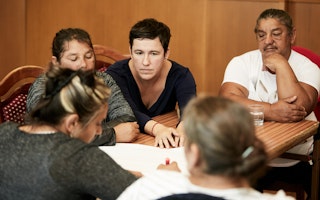What the “Roma Decade” Really Achieved
By Judit Szira

Nine years ago, just after the start of the Decade of Roma Inclusion, Štefan Vavrek was a young university student supported by a Roma Education Fund (REF) scholarship. After completing his studies, he launched an after-school program for 250 Roma children and their parents in his hometown of Rimavská Sec in southeastern Slovakia, and established a volunteer network of Roma and non-Roma teachers called Ternipe.
The result? Grades improved, the dropout rate fell to zero, and the transition rate from primary to secondary school shot up to 95 percent. A thriving, dynamic community life emerged, and the after-school program has since won official EU recognition as a best practice for preventing students from leaving school early. Today, at the end of the decade, Štefan is mayor of the town where 75 percent of the population is non-Roma.
These and many other success stories in education suggest that the Decade of Roma Inclusion has not been a waste of time. For many, the answer to the question, “Did the decade succeed?” is a simple no. But for those who prefer more complex answers, the decade secretariat has just published two reports: A Lost Decade? Reflections on Roma Inclusion Since 2005 and Roma Inclusion Index 2015.
These publications take a hard look at what happened to Roma inclusion in 11 countries over the course of 10 years. They pull no punches in highlighting the failure of governments to deliver on the decade pledge to close unacceptable gaps between Roma and the rest of society in housing, health, employment, and education. Nevertheless, the reports also suggest that it might be wrong to simply write off the decade as a waste of time, especially as it pertains to education.
The Roma Inclusion Index is a comprehensive overview drawn from a wide range of existing data to assess how much, or how little, progress was actually made in closing the gap between Roma and non-Roma. The indicators suggest that education stands out as the area where most progress is evident.
For example, the cumulative effect of 10 years of work by REF, since its founding at the beginning of the decade, has resulted in larger cohorts of Roma children enrolling in preschool, completing primary school, and going on to graduate from secondary and tertiary education.
In 2005 REF reached 5,000 beneficiaries; 10 years later the number of its annual beneficiaries has increased twentyfold and now exceeds 100,000. More than 60,600 children have been supported with direct enrollment in early childhood development programs, and dropout-prevention programs have reached over 113,000 Roma pupils. In addition to partnerships with school principals and mayors, REF has placed great stress on community empowerment and actively engaging parents.
On the downside, the data indicates a possible worsening when it comes to overrepresentation of Roma in special schools, and segregation in general. In Serbia, for example, Roma children are 36 times more likely than other children to be placed in special schools. On the upside, preschool enrollment of Roma children, which is widely recognized as an agent for future successful enrollment in mainstream primary education, increased dramatically from four percent in 2004 to 63 percent in 2014.
In Albania, the Index reports some of the most sobering results: on every indicator, girls are doing worse than boys, very few Roma are completing primary or secondary education, and segregation is worsening.
Yet even here there is good news. In the last year, two regional authorities in Albania have adopted and scaled up REF intervention models in primary education to provide extracurricular help for Roma children. REF projects reduced dropout rates from 86 percent to three percent in participating schools. And REF’s secondary education model has been adopted by the Albanian government, which matches REF’s efforts and resources to cover secondary school scholarships combined with tutoring and mentoring.
There’s reason to look forward to more encouraging data in the near future. In Romania, for example, 80 percent of Roma pupils now complete primary school, compared to 66 percent 10 years ago. And in Slovakia, not only do 20 percent more students complete primary school than 10 years ago, but there is also a promising quality indicator—Roma literacy skills have grown by 18 percent.
Clearly the decade did not “close the gap”—it was obvious from the beginning that it would take far more than 10 years to undo centuries of exclusion. But it did raise awareness about the plight of the Roma like never before. It extracted commitments from governments to develop inclusion strategies, and led to the EU Framework for National Roma Integration Strategies, described by George Soros as “a copy of the decade and an expansion of it to all EU member states.”
The strongest signal of political progress from Brussels was the Council of the European Union recommendations adopted on December 10, 2013, calling on member states “to ensure equal treatment and full access for Roma boys and girls to quality and mainstream education and to ensure that all Roma pupils complete at least compulsory education.” The measures—which included increasing access to preschool, preventing early dropouts, and ending segregation—amounted to an effective endorsement of REF’s activities and programs.
Bearing in mind that many millions of Roma continue to subsist in dire and inhumane conditions, I find it difficult to celebrate the achievements made since 2005. But I do believe the decade laid the foundation for change. When I see the gains achieved by Roma children and their parents, I see the potential of Roma inclusion—and I know that for all its shortcomings, the decade was not in vain.
The Roma Education Fund is a grantee of the Open Society Foundations.
Judit Szira is executive director of the Roma Education Fund.


